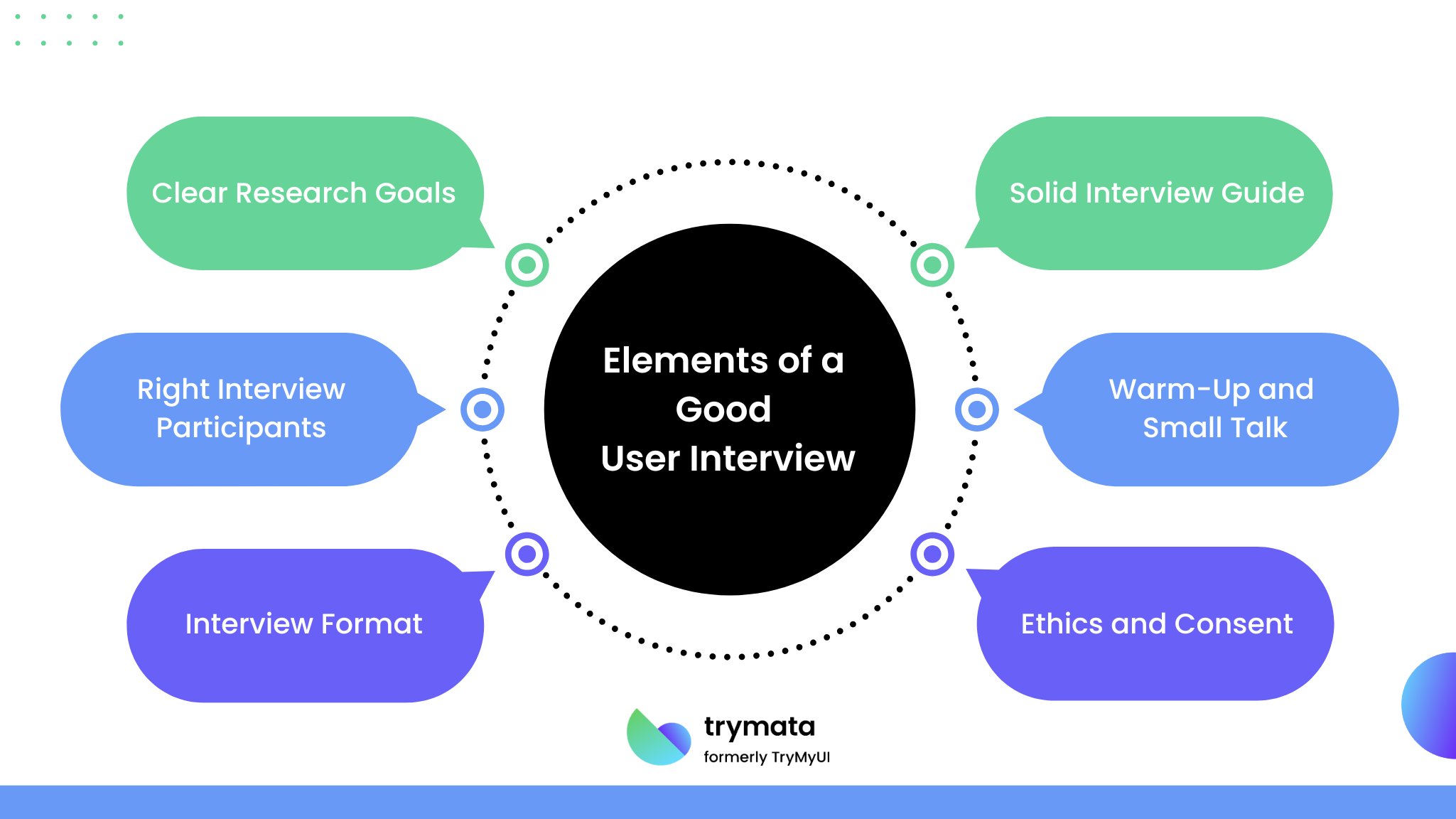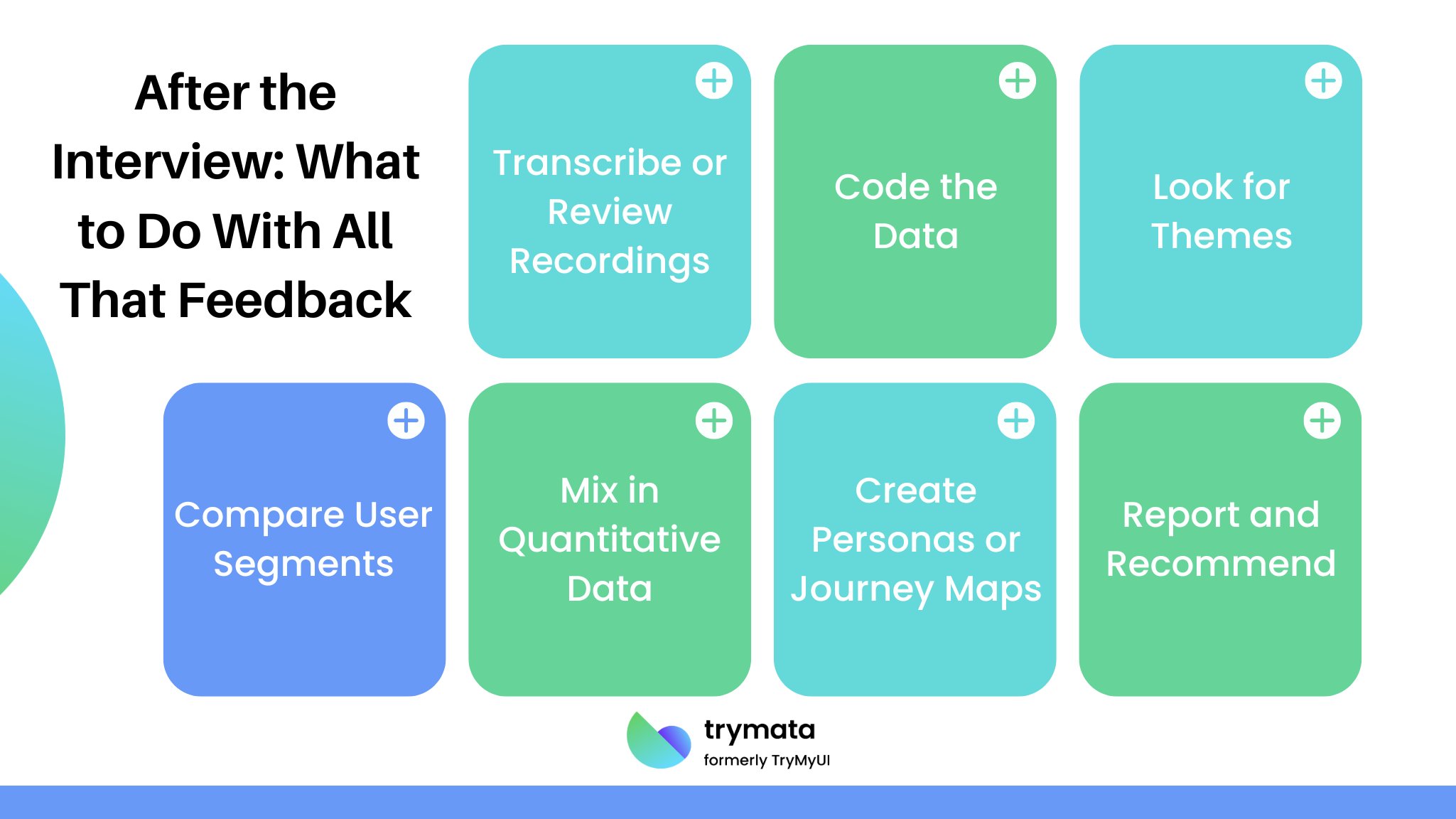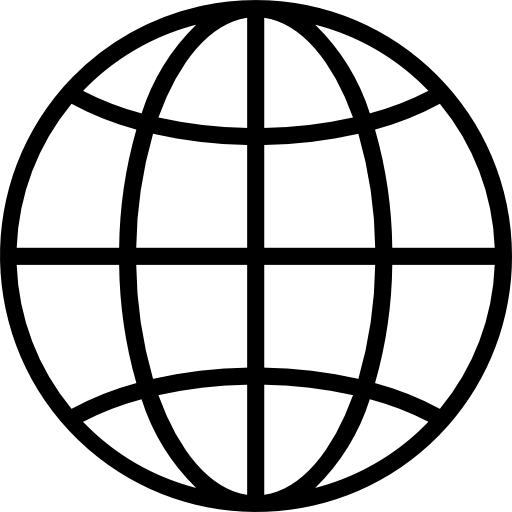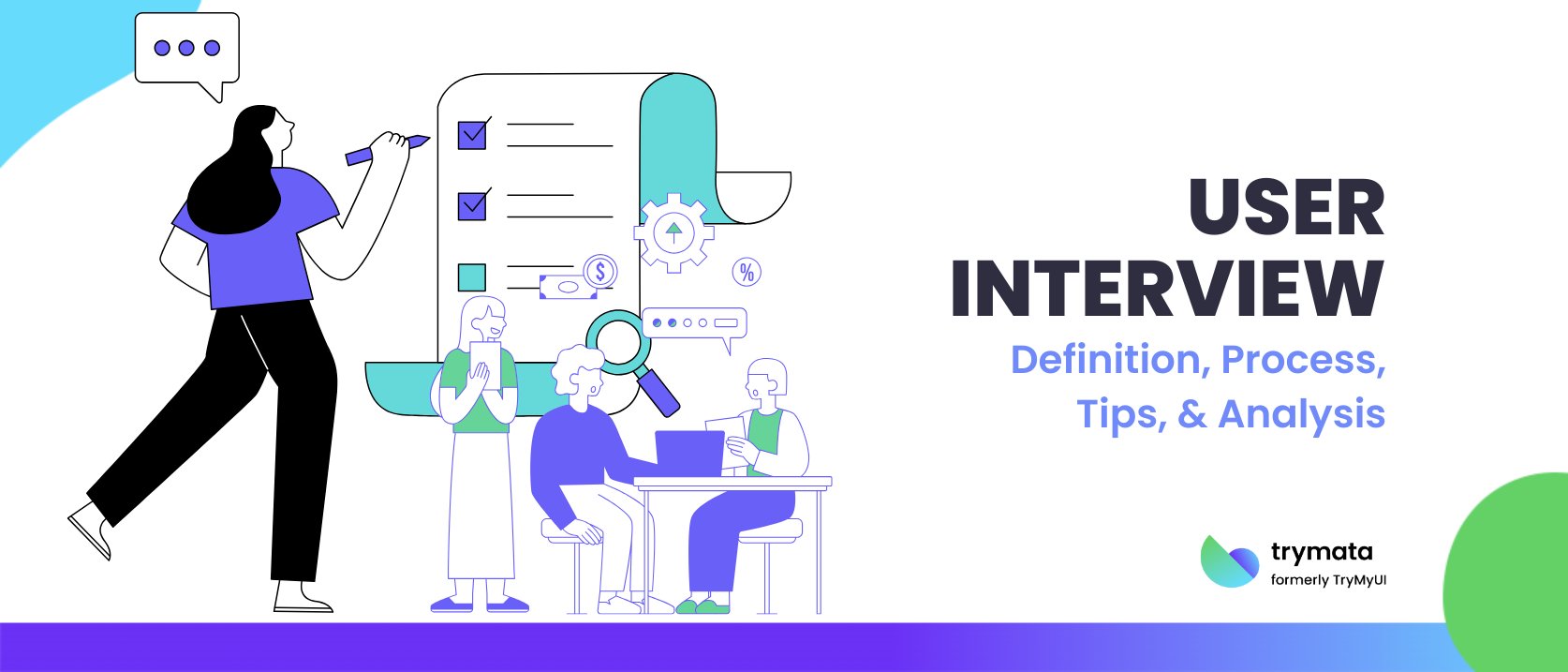Want to build something your users want? Talk to them. That’s where the user interview comes in. Whether you’re in the discovery phase of a project or trying to validate a new feature, these conversations help uncover pain points, thought processes, and user behavior that other methods might miss.
Let’s break down what a user interview is, how to conduct user interviews, and how to analyze what people tell you, so you can make smarter decisions and create better products.
What Is a User Interview?
A user interview is a type of qualitative interview where a researcher has a one-on-one conversation with someone from the product’s target audience. The goal? To learn about users’ experiences, needs, behaviors, and motivations.
Unlike usability tests, where participants interact with a product to complete tasks, user interviews focus more on thoughts, memories, and perceptions. They often happen in the early stages of user research, like the discovery phase, but they’re useful throughout the entire product development process.
These interviews can be structured, semi-structured, or even completely informal, depending on your research goals. The most common format is a semi-structured interview, where you ask a mix of open-ended and specific questions, allowing the conversation to flow naturally.
Why Use User Interview?
Talking to users helps answer questions about what they need, what frustrates them, and what they expect. Here’s what makes user interviews valuable:
- More Insight: In-depth interviews uncover new knowledge you might not get from surveys or analytics.
- Real User Feedback: You hear how users experience your product in their own words.
- User-Centered Decisions: The findings inform future design decisions, grounded in actual user needs.
- Empathy: You build a connection with users, especially when you make frequent eye contact (in person or via video) and actively listen.
- Validation: You can test assumptions from earlier research or prototypes.
- Flexibility: Interviews complement other methods, such as focus groups or usability tests.
User interviews are especially useful when dealing with self-reported data, uncovering qualitative data, or when you’re working on new ideas that haven’t yet reached the prototype stage.
Related: What is Qualitative Data Analysis?
How to Conduct a Good User Interview
A great user interview feels more like a conversation than a checklist. Here’s how to do it right:
- Know your goal: What are you trying to learn? Set clear research goals so that your questions lead to something useful.
- Talk to the right people: Interview participants who actually represent your target audience’s needs. Don’t just rely on one user—diversity brings different responses.
- Prepare thoughtful questions: Use a mix of open-ended and specific questions for user interviews. Avoid vague questions or anything that makes assumptions.
- Set the mood: Whether in person or online, pick a quiet spot. A relaxed vibe helps people open up and recall events fully.
- Start with small talk: A bit of friendly conversation builds trust. Ask about their favorite tools or typical day to get them talking.
- Guide, don’t lead: Let them speak freely. You’re here to learn, not to confirm what you already think.
- Watch and listen: Make frequent eye contact, take notes, and observe how they react. Their body language and tone offer more insight than words alone.
- Respect their time: Wrap up with gratitude, and be clear about what happens next.
A good interview gives you new knowledge, real user feedback, and plenty of qualitative data to inform future design decisions. Keep it curious, casual, and focused—and you’ll walk away with gold.
Elements of a Good User Interview
Want useful answers? Focus on these components when planning your interviews:

1. Clear Research Goals
Don’t start until you know why you’re doing this interview. Are you looking for feedback on a feature? Exploring user behaviors? Identifying gaps in current solutions? Setting the right goals helps shape your entire conversation.
2. Right Interview Participants
Choose people who reflect your actual users. A single interview with one user can already bring surprising insights, but aim for diversity to uncover different responses and perspectives.
3. Interview Format
There are different types of user interviews:
- Contextual interviews: Conducted in the user’s natural environment while they complete tasks.
- In-depth interviews: Focus on a user’s backstory, habits, and motivations.
- Initial interviews: Held early in the product lifecycle to learn about expectations and problems.
Each research type has its place. Combining two methods, such as contextual interviews and usability tests, can provide a more comprehensive picture.
4. Solid Interview Guide
Create a list of user interview data questions, leaving space for follow-up questions. Avoid vague questions or those that assume something. For example, instead of asking “Why don’t you use feature X?” ask “Can you tell me about the last time you used the product?”
5. Warm-Up and Small Talk
Start with a casual conversation to ease nerves. Ask about their day, role, or favorite tools. This makes it easier for them to recall events fully and speak openly.
6. Ethics and Consent
Be clear about what the interview is for, how the data will be used, and get written or verbal consent. Respect their privacy.
During the User Interview: Tips for Better Conversations
Here’s how to make your interviews more productive:
- Ask Open-Ended Questions: These lead to richer, more thoughtful answers.
- Listen Actively: Show you’re engaged. Nodding, paraphrasing, or making thoughtful pauses all help.
- Watch for Patterns: Notice repeated issues or moments when users hesitate or light up.
- Stay Neutral: Don’t lead the conversation. Let participants take the discussion in unexpected directions—it often leads to interesting things.
Related: What is User Story Mapping?
After the User Interview: What to Do With All That Feedback
Once you’ve spoken with your users, the real work begins: turning that qualitative data into something actionable.

1. Transcribe or Review Recordings
Whether you’ve taken detailed notes or recorded the session, go back and listen. You’ll catch things you missed in the moment.
2. Code the Data
Create a system of keywords or tags that reflect essential ideas (like “frustration,” “navigation issues,” “confusion,” or “happy moment”).
3. Look for Themes
Do multiple users mention the same pain points or describe similar behaviors when they interact with your product?
4. Compare User Segments
Do new users and advanced users give different responses? Does one group struggle to complete tasks while the other breezes through?
5. Mix in Quantitative Data
If you have analytics, survey results, or product usage metrics, use them to support (or contrast) what users are saying.
6. Create Personas or Journey Maps
These tools visualize users’ behaviors and help the team stay focused on the target audience’s needs.
7. Report and Recommend
Don’t just summarize the findings—turn them into next steps. For example, “Revise onboarding flow to address confusion around Step 2” or “Explore adding search to the dashboard.”
Common Challenges and How to Tackle Them
Even seasoned researchers run into issues. Here’s how to prepare for a few common ones:
- Social Desirability Bias: Some users may say what they think you want to hear. Reassure them that honesty is helpful, not politeness.
- Users Struggle to Articulate: Use prompts like “Can you walk me through that?” or “What would that look like?”
- Recruiting is Tough: Tap into Your Existing User Base or Incentivize Participation.
- Bias from Your Side: Stay aware of your assumptions and avoid steering the conversation.
Conclusion
A user interview is one of the most potent tools in user research. Whether you’re conducting an initial interview during discovery or exploring feedback after launch, talking to users gives you direct access to what matters most.
By asking thoughtful user interview questions, listening without bias, and thoroughly analyzing feedback, you’ll gain more insight into what users need and how to serve them better.
Don’t rely solely on self-reported data or analytics. Combine qualitative interviews with other methods, such as usability tests and contextual inquiries, to enhance your understanding.
In the end, interviews help you connect with your users in a real, human way—and that’s what makes good products great.
20 User Interview Questions: Examples & How to Create Your Own




